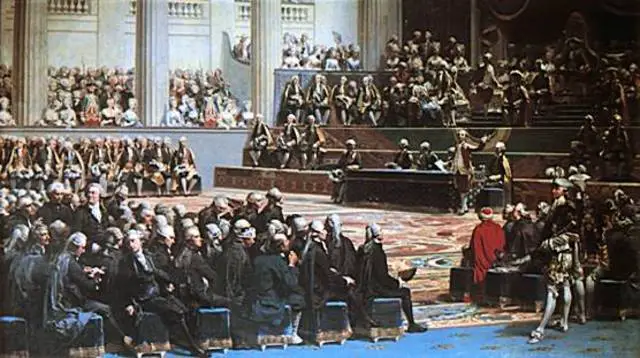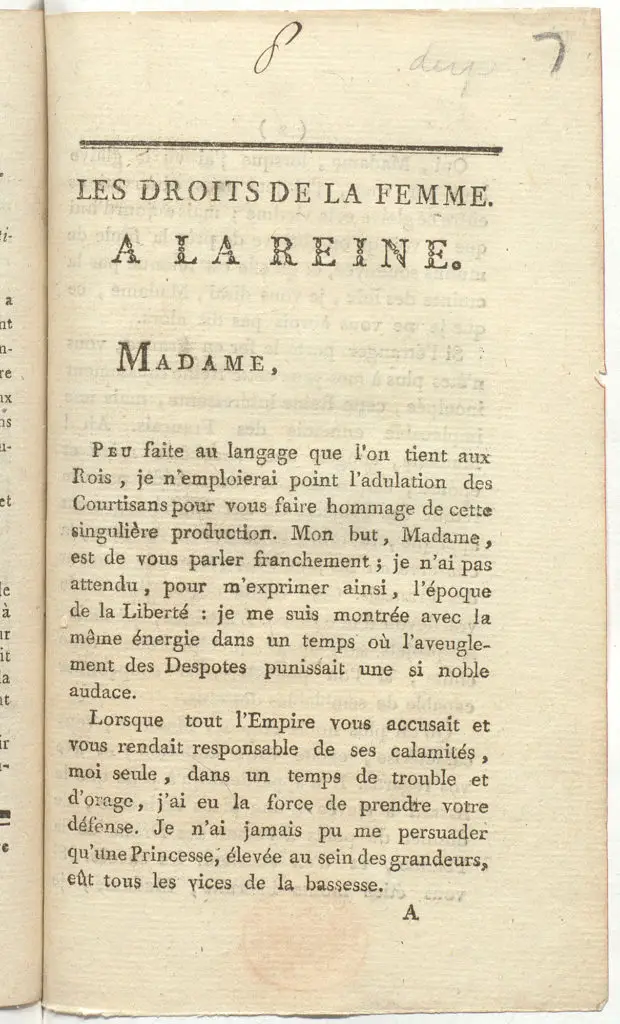French Revolution was a fearful yet impactful event during the late 1700s. It was a watershed event in modern history.
It lasted for about 10 years, from 1788 to 1799 A.D, and resulted in profound political and social changes.
French Revolution started with the rebellion of the commoners (Third Estate) against the decision made by the King.
The establishment of the National Assembly and the execution of King Louis XVI were the major events of this revolution.
The French Revolution came to a close when Napoleon Bonaparte ascended to power, led a coup, and established a Consulate and an emperor.
Here are the 10 major events that took place during the French Revolution.
10. Meetings of the Estates-General
Content

A meeting, after 1614, was summoned for the first time by King Louis XVI on May 5, 1789. Director-General of Finance, Jacques Necker, and Author of ‘What if the Third Estate?’, Emmanuel-Joseph Sieyes were the key people involved.
King Louis XVI declared the meeting of the Estates-General for the sole purpose of increasing taxes to handle the debt that had been acquired during the American Revolution.
The voting system of this meeting was decided as One-Vote from each Estates, which made the Third Estate unhappy. It resulted in a declaration of the National Assembly by the Commoners (June 13, 1789).
Read ,
- Top 10 Causes of the French Revolution
- Top 10 Major Effects of the French Revolution
- 10 Major Battles of The Napoleonic Wars
9. The Tennis Court Oath

After the Declaration of the National Assembly by the Third Estates, the deputies of this Assembly came together in an indoor tennis court, Jeu de Paume on June 20, 1789.
It was an Oath taken against the decision made by King Louis XVI during the Meeting of Third Estates-General and was not disbanded until the adoption of a new constitution of the kingdom.
The Tennis Court Oath can be taken as one of the iconic scenes during the Revolutionary era. It resulted in new events which included – the Declaration of the Rights of Man and the Citizen and Fall of the Bastille.
8. Fall of the Bastille

An ancient fortress, which was built during the Hundred Years’ War in the 13th Century to protect Paris, was stormed on July 14, 1789.
The storming of the Bastille was done by the Third Estate’s revolutionaries with a demand of wanting more votes to their side and gunpowder of that fortress for a future attack.
Thousands of men attacked the Bastille and demanded the surrender of the leader of Bastille, Governor de Launay. When Governor de refused to do so, they invaded the courtyard and started storming the Bastille.
Military leader, Governor de Launay, was beheaded and the prisoners were let free. About 100 revolutionaries lost their lives, and all the participants were given the title ‘Winners of the Bastille.’
7. Women’s march on Versailles

The march on Versailles by the women was a result of the shortage of bread and high prices due to the weak French economy.
The women’s march on Versailles took place on October 5, 1789, where one woman took the lead by beating a drum, and many other women followed her in the market of Paris carrying kitchen knives and simple weapons.
The march started with a demand for enough bread and a reasonable price and ended with an order for arms. The number of women had reached up to 60,000 by the end of that march.
The women’s march then went to the Palace of Versailles demanding the response of King Louis XVI. Few of the marchers invaded the courtyard and beheaded few guards.
The march was a success as it was able to force the king to come back to Paris and support the Declaration. The participants of this march were given the title ‘Mothers of the Nation.’
6. Declaration of the Rights of Man and the Citizen

Rights of Man and the Citizen was declared and passed by France’s National Constituent Assembly on August 26, 1789, defining individual and collective rights during the Revolutionary period.
The major drafts of this declaration were made by General Lafayette working along with Thomas Jefferson.
Primary rights of this declaration were: rights of liberty, security, property, and fraternity.
These rights were enjoyed by the men who were above 25 years old, paid taxes, and were not allowed to be called servants. They were all known as active citizens.
Differences between active and passive citizens ( women ) started creating problems and resulted in the Declaration of the Rights of Woman and the Female Citizen in September 1791.
5. Royal Flight to Varennes

Royal Flight to Varennes is the attempt made by the royal family on June 20, 1791, to flee after their imprisonment.
King’s brother had advised the king to flee from the prison and go to Austria. He could come back later with an army of soldiers and sharp weapons.
King and his family disguised themselves and attempted to flee Paris, but unfortunately, they were recognized by the locals at Varennes.
Due to this event, King Louis XVI was called a traitor, as he, along with this family, tried to act against the law and take foreign assistance. He was then suspended from the National Assembly.
4. Execution of King Louis XVI

King Louis XVI took over the throne in 1774, since then the French Economy was facing economic problems.
France was mismanaged and led to various crises during King Louis XVI reign. Citizens of France were not happy and resulted in the loss of respect towards their king.
After the Fall of the Bastille, King Louis XVI and his family were imprisoned. They tried to escape the prison but were caught by the locals and returned to Paris ( 1791).
National Convention declared King Louis XVI guilty for crimes against his citizens and scheduled his execution for January 21, 1793.
King Louis XVI was guillotined on the morning of January 21, 1792. With this, the 1000 years old French Monarchy was over.
3. Dissolution of the National Assembly

Dissolution of the National Assembly was done on September 30, 1791. It dissolved on its own and passed the governance to the newly formed Legislative Assembly.
The National Assembly was formed by the Third Estate and implemented its revolutionary events for two hears (1789-1791) and passed on to the Constitution of 1971 with full power given to the Legislative Assembly.
After the dissolution of the National Assembly, none of the members of the National Assembly was elected or had the right to take a seat in the new assembly.
2. The Reign of Terror

The Reign of Terror, a dark-violent period of the French Revolution, started from September 5, 1793, and lasted till July 28, 1794.
With the fall of the Bastille, the government of France was facing various crises. France was under the attack of foreign countries, and there was a rise of civil war from different parts of the country.
The Committee of Public Safety which was led by Maximilien de Robespierre was taking control of France during the period of terror.
This committee consisted of 12 members whose motive was to protect the country against foreign attacks.
During this period, about 17,000 people were executed, 500,000 were arrested, and 10,000 died in prison.
By the end of this period, Robespierre was found to be creating conspiracies against France. He was then executed on July 28, 1794.
The Reign of Terror ended on the same date with the execution of Maximilien de Robespierre.
1. Wars

During the first few years of the French Revolution, it was being observed by other European powers from afar.
France was out of the observation by the leading countries: Russia, Austria, and Prussia as their focus was towards the partition of Poland.
With the execution of King Louis XVI, a new group- the emigres of Austria, were in an urge to take action against France, as the Queen was the sister of Austrian Emperor Leopold II.
Revolutionary France was looked at as a threat or fear by the European Monarchies.
With the hope of gaining power over other powerful countries, France initiated by declaring war against Austria on April 20, 1792, and against Prussia in the same year.
The French Revolutionary Wars began on April 20, 1972, and it ended on March 25, 1821.
The initial period of the war was difficult for France as it faced various failures and crises, but with Napoleon Bonaparte as their leader, France was able to get victory over the majority of territories (the Italian Peninsula to North America).
Conclusion:
The French Revolution can be taken as a period where people abolished the monarchy and took control of the government. It had a significant impact on modern history.
The revolutionary act began with an economic crisis, led to various events including Tennis Court Oath, Fall of the Bastille, multiple wars, Declaration of the Rights of Man and the Citizen, and Dissolution of the National Assembly.
